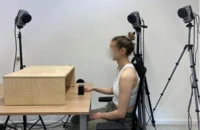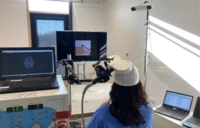Motor Cognition & Apraxia
Studies of motor cognition such as movement prediction, movement observation, embodiment, decision making as well as tool use and apraxia. Employed methods encompass assessment of motor behaviour (motion capture, reaction time measurements) as well as neuroimaging (functional magnetic resonance imaging, transcranial magnetic stimulation) and lesion analysis.
Movement, Kognition and the Brain
Waltraud Stadler
We do not have conscious access to processes of action planning. People are unable to verbally describe the sequence in which they contract specific muscles to produce a complex hand movement. Nevertheless, there is substantial and divers evidence for the close interplay between movement and cognition. In our projects, we use various methodological approaches to identify factors that influence action control. In addition to kinematic measurements, we employ non-invasive brain stimulation during different cognitive tasks, such as action imagery or motor decision-making. These methods allow us to capture the effects of cognitive processes on motor control. Furthermore, we are interested in how the interplay between cognition and the body can be used therapeutically when movement is impaired or temporarily restricted.
Literature:
Stadler, W., Hermsdörfer, J. Neuromuscular effects suggest that imagery engages motor components directly – a commentary on Frank et al. (2023). Psychological Research (2024). https://doi.org/10.1007/s00426-024-01943-y
Gowen, E., Poliakoff, E., Sheperd, H. & Stadler W. (2022). Measuring the prediction of observed actions using an occlusion paradigm: Comparing autistic and non-autistic adults. Autism research. doi: 10.1002/aur.2716
Tool use and activities of daily living
Clara Seifert, Joachim Hermsdörfer
By investigating the neural organization of tool use, interventions may be developed that reduce the consequences of neurological impairments of tool use. In order to decode the cortical representation (on most naturalistic conditions by e.g. using the ‘tool carousel’, see figure), several methods are being used (TMS, fMRT, Motion Capture Systems, lesion analysis) to test both healthy and brain damaged participants.


